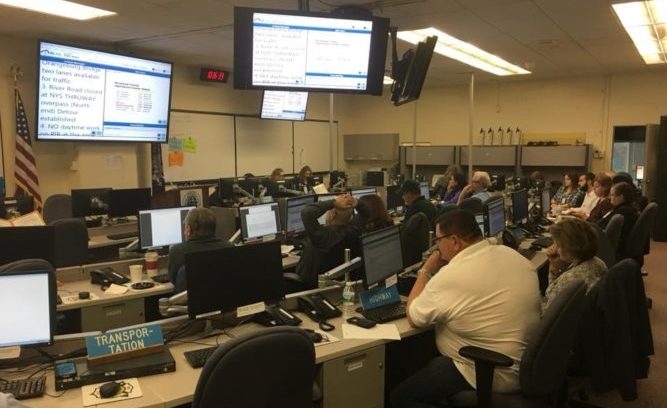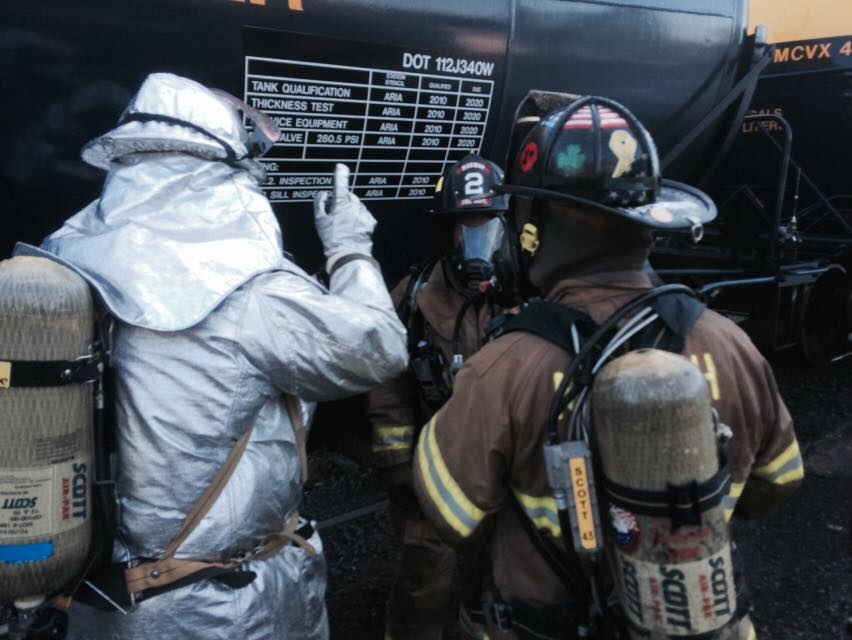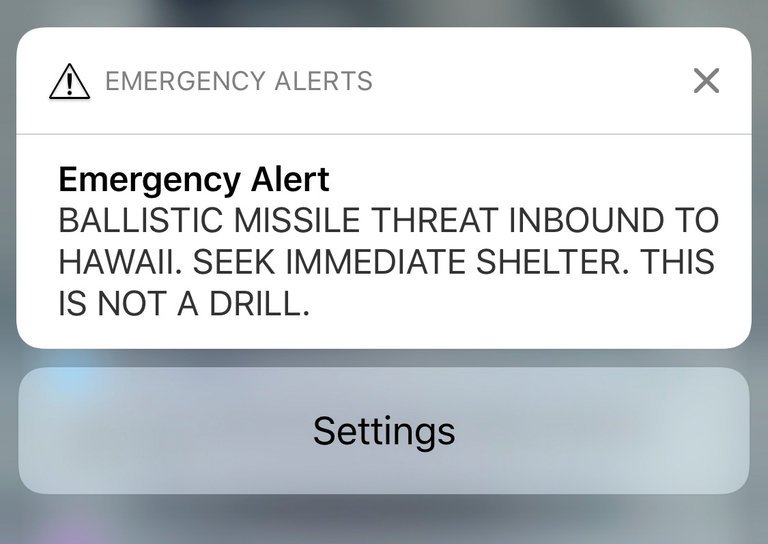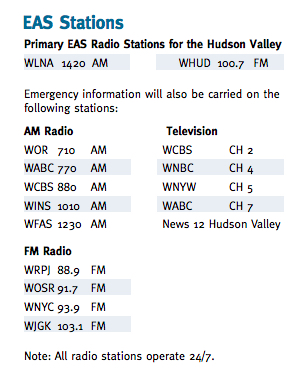 Earth Matters focuses on conservation, sustainability, recycling and healthy living. This weekly series is brought to you by Maria Luisa Boutique, Strawtown Studio’s Winter Break Mini-Camp and Summer Play Camp at Blue Rock School.
Earth Matters focuses on conservation, sustainability, recycling and healthy living. This weekly series is brought to you by Maria Luisa Boutique, Strawtown Studio’s Winter Break Mini-Camp and Summer Play Camp at Blue Rock School. If Earth Matters to you, sign up for our mailing list and get the next installment delivered right to your inbox.
by Susan Hellauer
On Saturday, January 13, vacationers and residents were enjoying another mild, sunny day on the Hawaiian Islands, when an emergency alert popped up on phones, TV and radio:
BALLISTIC MISSILE THREAT INBOUND TO HAWAII. SEEK IMMEDIATE SHELTER. THIS IS NOT A DRILL
People ran for cover, huddling with their kids in bathtubs and interior rooms, texting out frantic goodbye messages.
Emergency Management officials quickly determined that the alert had been issued in error, and sent a denial moments later via Twitter:
NO missile threat to Hawaii.
— Hawaii EMA (@Hawaii_EMA) January 13, 2018
But it took more than half an hour for another message on the Emergency Alert system itself to rescind the original alert.
And just a week earlier, residents of Montecito, near Santa Barbara, California, had been warned about the danger of severe flooding from fire-ravaged hillsides. As rainstorm-induced mud- and rockslides let loose in the wee hours of January 9, most residents were at home, asleep in their beds. Emergency alerts pushed to cell phones failed in many cases because of power outages that affected Verizon’s cell towers. Local alerts came too late, and deadly mudslides have claimed 21 lives to date.
Emergency Managers in Santa Barbara County hesitated to overuse the emergency alert system, because local residents, who had just evaded a brush with the enormous Thomas Fire, were in danger of becoming “disaster fatigued,” and could begin to ignore too-frequent alerts. “If you cry wolf, people might stop listening,” said Jeff Gater, Santa Barbara County emergency manager.

Rockland County’s Emergency Operation Center staff at their stations. Photo courtesy Rockland County Fire and Emergency Dept.
Emergency alerts: an inside look
How exactly do emergency managers make the decision to publish an alert for imminent danger? What tools do they have to work with from the county, state and federal government? And how do citizens make sure that they get all the alerts they need, when they need them? To get both the big picture and the local lowdown on emergency alerts, I spoke with Nicholas A. Longo, Jr., Program Coordinator for Rockland County Fire and Emergency Services, and Nancy Baker, communications specialist with the Department of Fire and Emergency Services. Most days, you’ll find them both at their desks at the County Fire Training Center in Pomona, hoping for another boring day.
During 2012’s Superstorm Sandy, regular emergency alerts helped us prepare for and weather the storm. But for sudden dangers—like flash flooding, for example—do you ever worry that “disaster fatigue” could make residents tune out your warnings?
Longo: We struggle with that all the time, whether or not to use the public notification systems, for what reason and how often. We do try to use them in a very judicious manner, so that we don’t desensitize people to these calls. So, if we are calling you, it’s something you should know about, and the call or message will include important information, or an action that you need to take.

Fire Training Center and emergency operations headquarters in Pomona. Photo courtesy Dept. of Fire and Emergency.
What kinds of emergency alert systems are available in Rockland County?
Longo: Rockland County uses two different public notification systems for emergency alerts and calls. NY-Alert, which is sponsored by the state, uses enhanced 911 data geocoded to addresses. It places calls to landlines within a polygon that we create around an emergency situation. What’s great about this is that it reaches those without cell phones and who don’t use social media, like many senior citizens.
If you want NY-Alert to call or message your cell phone, however, you need to go to their website, create an account and put your cell number in there with your address. They will then call or message your cell if it’s registered within the area targeted for an alert.
We also have the Code Red system, provided to us free of cost by Entergy Corporation (which manages Indian Point Energy Center in Buchanan, NY). It’s intended specifically for alerts from the Indian Point nuclear energy plant, but they do let us use it for other calls as well. It also uses enhanced 911 data for landline calls, but people can opt in to Code Red and add their cell phone numbers for alerts.
Some of our larger towns and villages have their own systems, and some opt into NY-Alert. Check with your own town and village to see what they are using, and sign up.
What if I opted in to NY-Alert with my cell phone here, but my cell phone and I are somewhere else when there’s an emergency—like those vacationers in Hawaii. How will I get an emergency alert?
Longo: You won’t get one if they use a system like Code Red or NY-Alert. But if they use a federal system like FEMA’s Integrated Public Alert & Warning System (IPAWS), or another kind of Wireless Emergency Alert (WEA), you would receive it on your cell phone. You don’t have to opt in for that. It’s pushed directly from cell towers to mobile phones in the affected area, like an AMBER Alert. This system is used when you need to notify the public to take immediate protective action. With this kind of message there would also be TV and radio emergency alert messages.
Baker: A jurisdiction’s emergency managers must be trained and approved to use IPAWS to push alerts to cell phones in a specific area. Rockland has been approved and has tested the system. We’ve got a lot of transients in our county, like those who come here to use the parks in the summer, so this is really important for us if something were to happen.

A Bakken oil train accident drill in July 2015, supported by CSX, which operates a freight line through Rockland County. CSX trains carry volatile Bakken Crude oil as well as many other hazardous materials. Photo courtesy Rockland County Dept. of Fire and Emergency
How do you sort out whether the county or town should send out an alert?
Longo: We work with the towns to make sure only one jurisdiction sends out an alert about a specific situation. In Rockland County we all work together and have good relationships. The bottom line is resident safety. And most of us live and work right here in the county.
If my cell is silenced, will emergency alerts break through?
Longo: A NY-Alert will not override a silenced phone, but for an IPAWS (federal) alert, your phone is automatically opted in, and should sound even if the phone is silenced. You can turn off AMBER alerts and other emergency alerts in your phone’s settings, but we certainly don’t recommend this.

Emergency alert on Hawaiian cell phone, January 13, 2018. Photo: Apple Inc., public domain, via Wikimedia Commons
Someone pushed the wrong button in Hawaii, and folks there thought a missile attack was on its way. How can we trust that emergency alerts are real?
Longo: If I saw that alert come through, my first inclination would be, as President Reagan used to say, “trust but verify.” If no other media outlets are reporting it, that should arouse some skepticism. The alert is coming from a trusted source, but where else am I seeing this? And there should be other informational alerts coming out right after the initial one.
Baker: We use multiple outlets to get information out there. You are going to be hearing from us from all different directions, so take a deep breath, make sure that you are really are getting the right information and verify it before you panic.
Longo: And if North Korea (15 minutes’ flight time from Hawaii) weren’t on everybody’s mind, there would have been a lot more verifying and less trusting.
In Rockland County, what would be the most likely reasons that we would hear from you about a sudden, imminent threat?
Baker: Flooding. We have inundation areas that are already preconfigured and preplanned and we can get that information out rapidly.
Longo: When Bakken crude oil was first coming through the county, we did a grid system around the rail line and preprogrammed areas where we can fast-call to notify people in case of an emergency. A CSX incident could also be any of a number of other hazmat emergencies. Based on the situation you could be advised to evacuate in a certain direction, or shelter in place.
We have a program for Indian Point that’s been in place for decades. Most people who live within the planning area for Indian Point should be aware that there’s a nuclear power plant nearby, and they should know what to do. [Note: you might live outside an evacuation zone, but your child may attend school within one. Liberty Elementary, in the Nyack School District, is within the Indian Point evacuation zone. Check the county website Indian Point page, and RocklandIPReady.com for school relocation information. – EM]

Indian Point Energy Center, a nuclear power plant in Buchanan, NY, Westchester County. Photo courtesy Riverkeeper
What about disabled people who need assistance in a sudden emergency?
We have RocklandRegisters.com, where people with special needs can get signed up for help in an emergency.
After the initial alert, and verification, how can people get the most up-to-date information on an imminent local threat?
Baker: Check our social media feeds on Facebook and Twitter, and our website.
Besides social media, we use traditional media—and anything else in our toolbox that we can use. We don’t say “We did a cell blast or an IPAWS alert and we’re done.” We don’t rely on one tool. Most platforms have some limitation, so that’s why we try to use a multi-platform approach.
It sounds like the emergency alerts are only half the story. People need to know the hazards they live with, and how to react, right?
Longo: The best thing that people can do is be aware of issues that can happen near them, research what they should do in the event, pre-plan, and practice the plan. I’ll put a plug in for our fire and emergency services page on the county website. And ready.gov and the American Red Cross websites are also good for making disaster plans.
But the workaround for everything is situational awareness, and you should practice it every day. Do you look for bags left on the floor? Or individuals who seem out of place? If you see something, say something. Wherever you go, do you notice the exits? Is the emergency exit blocked? Be aware of fire exits in a movie theater—or a mall. It’s super important. And teach your kids, too. Teach them from a young age.

Rockland County hazardous materials (hazmat) team decontaminates after deployment. Photo courtesy Rockland County Dept. of Fire and Emergency
Unfortunately, people everywhere are thinking about attacks with missiles, chemicals, drones, and worse. If we get such an alert, what do we do?
Longo. Understand the issue and have a plan on what to do—alternate family meeting places, for starters. That may seem simple, but there’s no silver bullet, nothing that says “If there’s a drone attack, pick up your kid and go south.”
Baker: We have plans for multiple types of events throughout Rockland County. Try not to panic, stay in touch, and we’ll all do the best we can.

Emergency Alert System radio and TV stations in the Hudson Valley. In a severe emergency, they will broadcast news and information related to the emergency. Image courtesy FEMA
Learn more:
- “Are You Ready for the Big One?” (Nyack News and Views, 9/2/17)
- “The Bomb Train Next Door” (Nyack News and Views, 6/28/15)
- Rockland County Fire and Emergency Services web page
- Rockland County Fire and Emergency Services on Facebook and Twitter
- Rockland County Indian Point Emergency Information web page
- Rockland County Access and Functional Needs Registry – for those needing assistance during an emergency
- FEMA Integrated Public Alert & Warning System
- Entergy “Code Red” registration
- NY-Alert registration
Read Earth Matters every Saturday on Nyack News And Views, or sign up for the Earth Matters mailing list.
Earth Matters focuses on conservation, sustainability, recycling and healthy living. This weekly series is brought to you by Maria Luisa Boutique, Strawtown Studio’s Winter Break Mini-Camp and Summer Play Camp at Blue Rock School.











